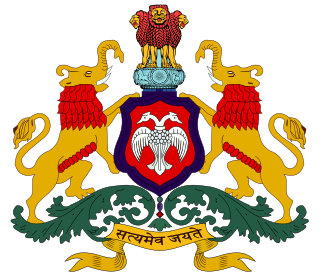This page is based on this
Wikipedia article Text is available under the
CC BY-SA 4.0 license; additional terms may apply.
Images, videos and audio are available under their respective licenses.
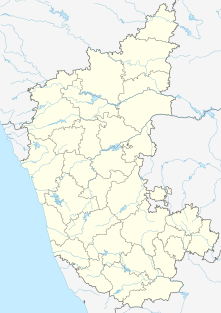
Mysore, officially Mysuru, is a city in the state of Karnataka, India. It is located in the foothills of the Chamundi Hills about 145.2 km (90 mi) towards the southwest of Bangalore and spread across an area of 152 km2 (59 sq mi). Mysore City Corporation is responsible for the civic administration of the city, which is also the headquarters of the Mysore district and the Mysore division.

The University of Mysore is a public state university in Mysore, Karnataka, India. The university was founded during the reign of Krishnaraja Wodeyar IV, the Maharaja of Mysore. It opened on 27 July 1916. Its first chancellor was the Maharaja of Mysore; the first Vice-Chancellor was H. V. Nanjundaiah. The university became the first outside the British administration in India, the sixth in India as a whole, and the first in Karnataka. It is a state university of the affiliating type, and became autonomous on 3 March 1956, when it gained recognition from the University Grants Commission.
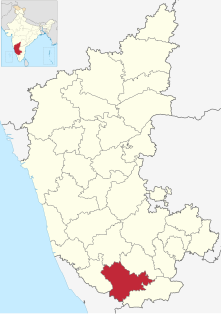
Mysore officially known as Mysuru District is an administrative district located in the southern part of the state of Karnataka, India. The district is bounded by Mandya district to the east and northeast, Chamrajanagar district to the southeast, Kerala state to the south, Kodagu district to the west, and Hassan district to the north. It features many tourist destinations, from Mysore Palace to Nagarhole National Park. This district has a prominent place in the history of Karnataka; Mysore was ruled by the Wodeyars from the year 1399 till the independence of India in the year 1947. Mysore's prominence can be gauged from the fact that the Karnataka state was known previously as Mysore state.

Mysore State was a separate state within the Union of India from 1948 until 1956 with Mysore as its capital.
The state was considerably enlarged in 1956 when it became a linguistically homogeneous Kannada-speaking state in 1956, within the Union of India. It was subsequently incorporated into the state of Karnataka.

Chandragiri is a small town in Chittoor district of the Indian state of Andhra Pradesh. It is the mandal headquarters of Chandragiri mandal in Tirupati revenue division. It also falls in the jurisdictional limit of Tirupati Urban Development Authority.

Channagiri is a panchayat town in Davanagere district in the state of Karnataka, India. It is a taluk headquarters in Davanagere District.

The recorded history of Karnataka goes back more than two millennia. Several great empires and dynasties have ruled over Karnataka and have contributed greatly to the history, culture and development of Karnataka
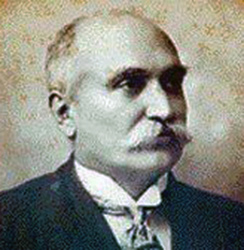
Benjamin Lewis Rice, popularly known as B. L. Rice, was a British historian, archaeologist and educationist. He is known for his pioneering work in Sanskrit, Kannada, Telugu and Tamil inscription in the Kingdom of Mysore. Rice's researches were published as the voluminous Epigraphia Carnatica which contains translations of about 9000 inscriptions he found in the Old Mysore area. Rice also compiled the much acclaimed Mysore Gazetteer which still remains the primary source of information for most places in Mysore and neighbouring Coorg. Rice served with distinction in the Mysore civil service and as first Director of the Mysore State Archaeology Department.

Kalale is a village in the southern state of Karnataka, India. It is located in the Nanjangud taluk of Mysore district.

The flag of Karnataka is the proposed flag of the State of Karnataka in Southern India.

Panchalingeshwara Temple in Govindanahalli, Mandya district, Karnataka state, India, was constructed around 1238 A.D. during the reign of the Hoysala empire King Vira Someshwara. The name "Panchalingeshwara" literally means "five linga". The temple is protected as a monument of national importance by the Archaeological Survey of India. The famous sculptor of Hoysala times, Ruvari Mallitamma, is known to have made contributions to the temple.
Kaggere is the name of three separate villages in southern Karnataka of south India.
Mirle Srinivasa Nagaraja Rao was an Indian archaeologist who served as Director General of the Archaeological Survey of India (ASI) from 1984 to 1987.

Sutturu is a village on the banks of river Kabini, in the state of Karnataka, India. It is located in the Nanjangud taluk in the district of Mysore. It is famous for the Suttur Mutt which is one of most prominent spiritual centers of India.
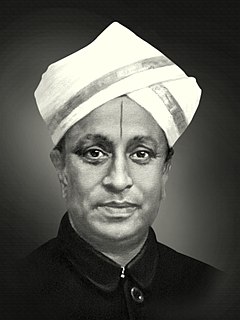
Mysore Hatti Krishna Iyengar was an Indian historian, archaeologist, epigraphist and authority in Indian numismatics. He pioneered the new field of Indology involving the study of Indian culture, history, music and traditions from a historical perspective. He is credited with the discovery of one of the oldest Kannada inscriptions, the Halmidi inscription, dating back to 350 A. D. He also discovered the remains of the city of Isila near Brahmagiri during his excavations at Chandravalli, Chitradurga. The forgotten tomb of Shahaji was traced by M. H. Krishna during his years at the Mysore Archaeological Department. His years at the Archaeology Department saw him churn out many of excavation reports and these were later published in successive volumes of Epigraphia Carnatica. During Krishna's tenure at Bangalore, he was instrumental in cataloguing close to 6000 coins in the archives of the archaeology department there. He was trained at the University College, London under Ernest Arthur Gardner. and would later accompany Sir Flinders Petrie in his excavations in Egypt.
